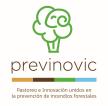LACTOVALOR Operational Group: Innovation in the valorization of whey as a raw material
- Type Operational group
- Status In progress
- Execution 2023 -2026
- Assigned Budget 250.000,00 €
- Scope Autonómico
- Autonomous community Aragón
- Main source of financing CAP 2023-2027
Extraction technology for certain substances, such as large-molecular proteins. The best extraction technologies will be investigated, leveraging VELABER's expertise in ultrafiltration, nanofiltration, reverse osmosis, and other technologies. Different components, materials, and pore sizes will be studied, in addition to operating specifications. Finally, the best technologies to implement in extraction systems for components (large-molecular proteins) from whey will be determined.
Modular systems adaptable to different types of cheese factories. Based on the membranes and other elements selected in the previous objective, a complete extraction system will be designed for operation under near-real-world conditions during the project, including all subsystems and components (pumps, sensors, controls, operating sequences, storage volumes, etc.).
New foods that combine extracted components with locally produced ones. A two-pronged approach is contemplated: a) On the one hand, the production of butter from the fat fraction is proposed, which will require prior pasteurization and subsequent processing by churning. Butter will be flavored with a herb typical of the area where the cheese factory is located. From the protein fraction, cottage cheese will be produced, to which some aromatic herbs or mushrooms typical of the area could also be added to create a differentiated product. The new foods to be designed, formulated, and produced will depend on the analyses performed and the extracted compounds, although the initial idea is as described in the previous paragraph. b) On the other hand, the improvement in foods (recipes) already marketed by DEFEDER will be evaluated, assessing their nutritional value.
Figures on the replicability and profitability of the proposed solutions. Economic analysis of the products resulting from the Project (supplemented DEFEDER food products and new foods from BAL DE BROTO), including production costs, commercial value, and production potential. Extension to the sector and economic impact assessment with a view to reaching the entire sector. Analysis of the potential for replicability in other cheese farm sizes, other animal species, and other food products that may require supplementation.
- Technology for extracting certain substances such as large molecular size proteins.
- Modular systems adaptable to different types of cheese factories.
- New foods that combine extracted components with others produced locally.
- Figures regarding replicability and profitability of the proposed solutions
- Project Coordination. Includes justification work for each period.
- Analysis, design and manufacturing of prototypes
- Whey analysis and description of reusable components.
- Design of extraction and prototype manufacturing processes.
- Application design of extracted components in commercial products.
- Design and definition of new foods to be developed.
- Design and manufacturing of liquid phase regeneration processes after extractions.
- Effective implementation of innovative solutions
- Extraction of reusable components and performance of liquid phase regeneration tests
- Application of the extracted components in food products
- Manufacturing of the first series of new foods
- Economic analysis and potential for replicability
- Outreach and Communication. This includes all tasks aimed at maximizing the Project's impact in the affected sectors and beyond, creating outreach spaces at the installation sites, pursuing a broad geographic focus, and facilitating the future commercialization of the technologies.
Whey is one of the most polluting materials in the food industry due to its high organic matter content, with its lactose content being the main cause of this, due to its ability to act as a substrate for microbial fermentation. The Biochemical Oxygen Demand (BOD) of whey varies between 20,000 and 50,000 mg O2/L. Between 0.25 and 0.30 liters of untreated whey is equivalent to the wastewater produced by one person in a day.
For this reason, governments in several countries are requiring dairy industries to implement clean production practices. Government policies are becoming increasingly strict in this regard. However, this concern for more sustainable production of ingredients and food products may be a potential opportunity to revitalize some whey transformation processes that have been abandoned in the past due to a lack of economic viability compared to direct chemical synthesis or the use of other fermentable substrates. Whey contains more than half of the solids present in milk, making it a rich source of nutrients. It is attributed with various properties, including purifying, detoxifying, regenerating intestinal flora, and boosting the immune system.
Furthermore, when consumed fresh, it is considered to provide the body with essential nutrients for metabolic balance. It is the gentlest yet most effective method for improving bile flow, bowel movements, and bladder emptying. Considering the technological, nutritional, pharmacological, physiological, and other values of whey, this raw material offers great potential for the dairy industry.
Over the past 40 years, awareness of its importance has increased due to its high nutritional value for both humans and livestock, and various component separation technologies have begun to be developed. However, technologies capable of performing these tasks on a large scale (as intended in this Project) and efficiently are still in the process of commercialization, as is the case with nanofiltration, in which the beneficiary, VELABER, is a national pioneer.
The main objective is to transform whey into a high-value raw material, using innovative and sustainable technologies.
Whey, despite its high content of nutrients such as lactose, protein, and minerals, is considered waste. Improper disposal creates serious environmental pollution problems. Innovative processes will be developed to extract and utilize different components of whey, reducing the environmental impact of the dairy industry and generating new products and markets, boosting the circular economy.
- Coordinator/entity name: VELABER Consulting SL
- Postal address: C. Matilde Sangüesa 26, 5ºA, Zaragoza. PO Box: 50015
- Coordinator/entity email: javier.bernad@velaber.es
- Telephone: 657558618
- VELABER Consulting SL
- FADEMUR: FEDERACIÓN DE ASOCIACIONES DE MUJERES RURALES (mariolanunez@fademur.es)
- QUESOS BAL DE BROTO SL(info@quesosbaldebroto.com)
- UNION PEQUEÑOS AGRICULTORES DE ARAGON (upahuesca@upa.es)
- UNIVERSIDAD DE ZARAGOZA (otri@unizar.es.)
- DEFEDER ALCOLEA SL (info@defeder.es)
- VELABER Consulting SL






